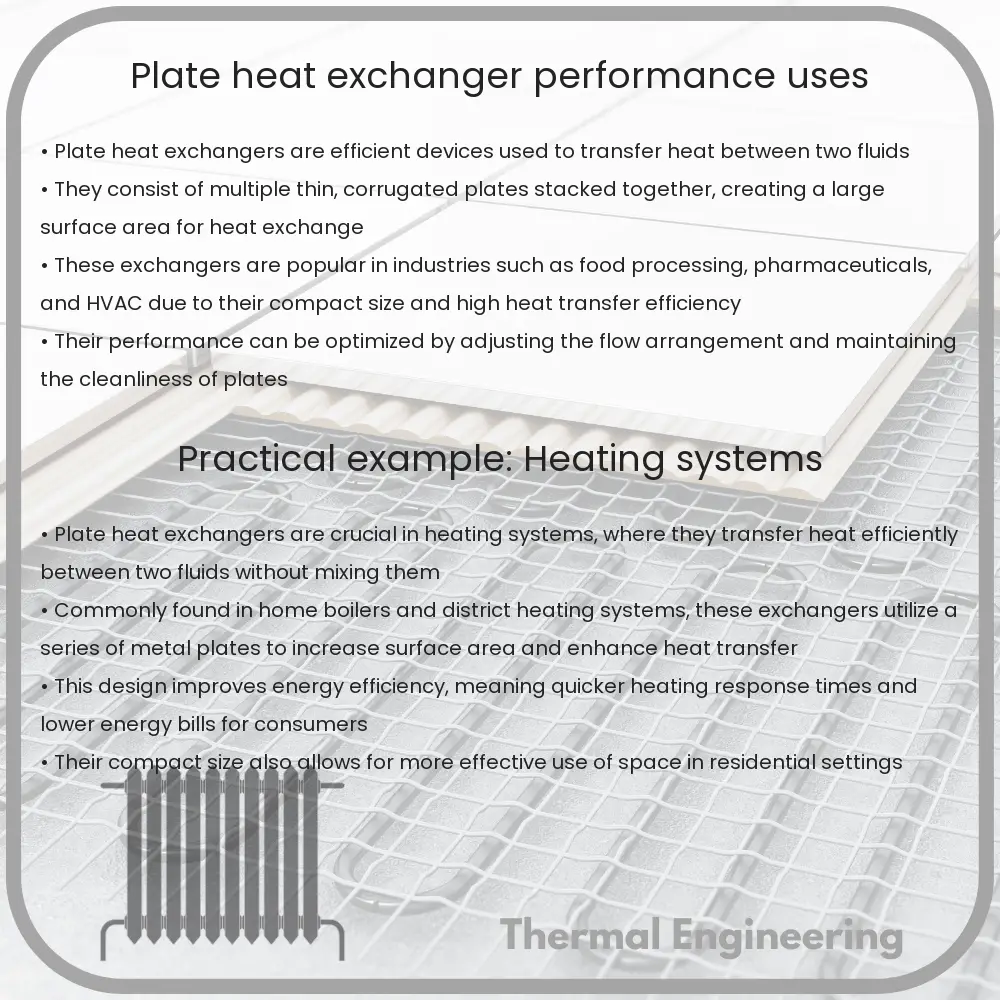Learn about plate heat exchangers, their efficient heat transfer, structure, performance factors, and diverse industrial applications.

Understanding Plate Heat Exchangers: Performance and Uses
Plate heat exchangers are sophisticated devices designed to transfer heat between two or more fluids efficiently. They are widely known for their high heat transfer efficiency, compact structure, and versatility in various applications. This article explores the performance characteristics and uses of plate heat exchangers.
Structure and Working Principle
A plate heat exchanger consists of multiple thin, corrugated plates assembled at a fixed distance. Each alternate space between the plates forms a channel for one of the fluids to flow through, while the second fluid flows through the other channels. The corrugated pattern not only strengthens the plates but also promotes turbulent flow, enhancing the heat transfer efficiency.
The plates are usually made of stainless steel or titanium, which gives them high thermal conductivity and resistance to corrosion. The edges of the plates are sealed with gaskets, which direct the fluids into alternating channels and prevent them from mixing.
Performance Factors
The performance of a plate heat exchanger is influenced by several factors:
- Plate design: The design of the plates, including their size, thickness, and corrugation pattern, affects the turbulent flow and surface area available for heat transfer.
- Material: The thermal conductivity of the plate material is crucial because higher conductivity facilitates a more efficient heat transfer.
- Flow arrangement: Plate heat exchangers can operate in counterflow or co-current arrangements. Counterflow is typically more efficient because it can achieve a higher log mean temperature difference (LMTD).
The efficiency of a plate heat exchanger can be evaluated using its overall heat transfer coefficient (U), which is defined by the equation:
\[ U = \frac{Q}{A \times \Delta T_{lm}} \]
Here, Q is the rate of heat transfer, A is the heat transfer area, and \Delta T_{lm} is the log mean temperature difference between the two fluids.
Common Uses of Plate Heat Exchangers
Thanks to their efficient heat transfer and compact size, plate heat exchangers are employed in a variety of industries:
- Food and Beverage: Used for cooling or heating products like milk, beer, and juices to ensure safety and quality through pasteurization and other processes.
- Chemical Processing: Employed in the heating or cooling of chemicals, which is crucial for the vast array of chemical reactions that occur in the industry.
- Power Generation: Used in power plants to cool the working fluids in turbines and as interchangers in cogeneration plants where waste heat is reused.
- Marine Applications: Integral in managing engine coolant and refrigerating systems on ships, minimizing energy consumption and enhancing operational efficiency.
Conclusion
Plate heat exchangers are fundamental components in many industrial applications due to their efficient heat transfer capabilities, adaptability to different environments, and relatively low maintenance requirements. Understanding their mechanics and applications helps industries optimize thermal processes and contribute to energy conservation efforts.
This insight into the performance and uses of plate heat exchangers reveals why they are a preferred choice in various sectors and highlights their significance in modern engineering solutions.